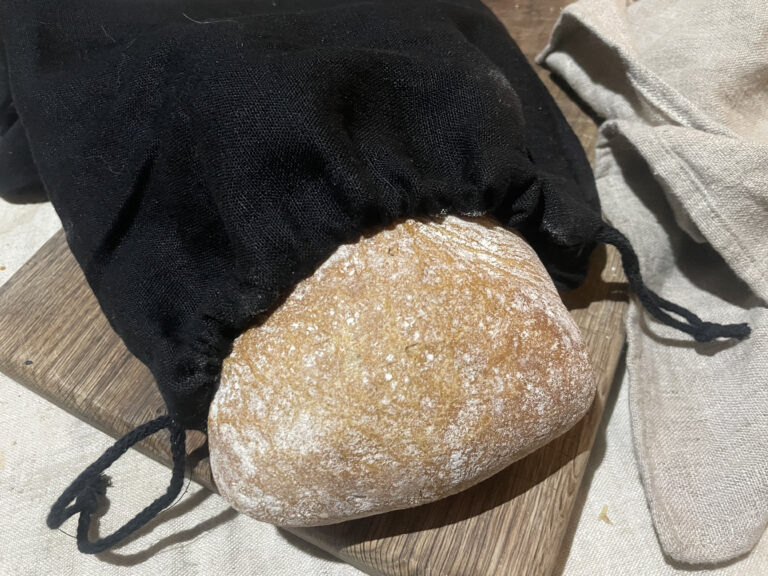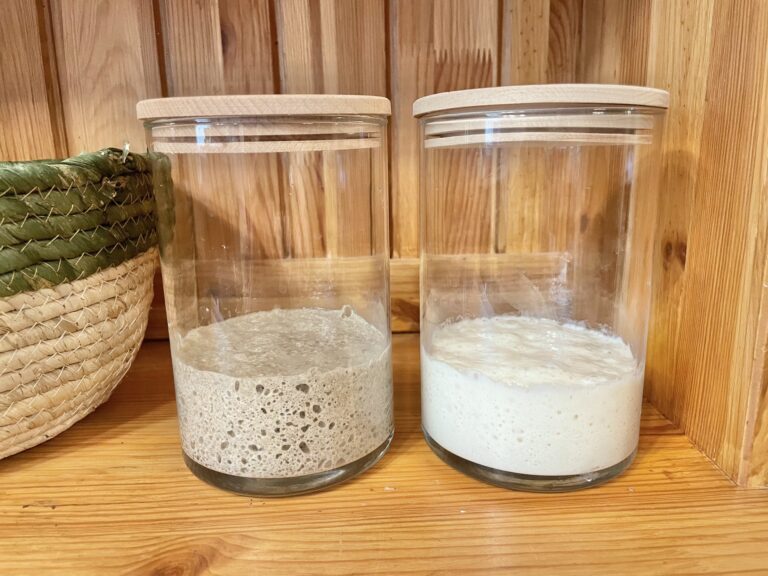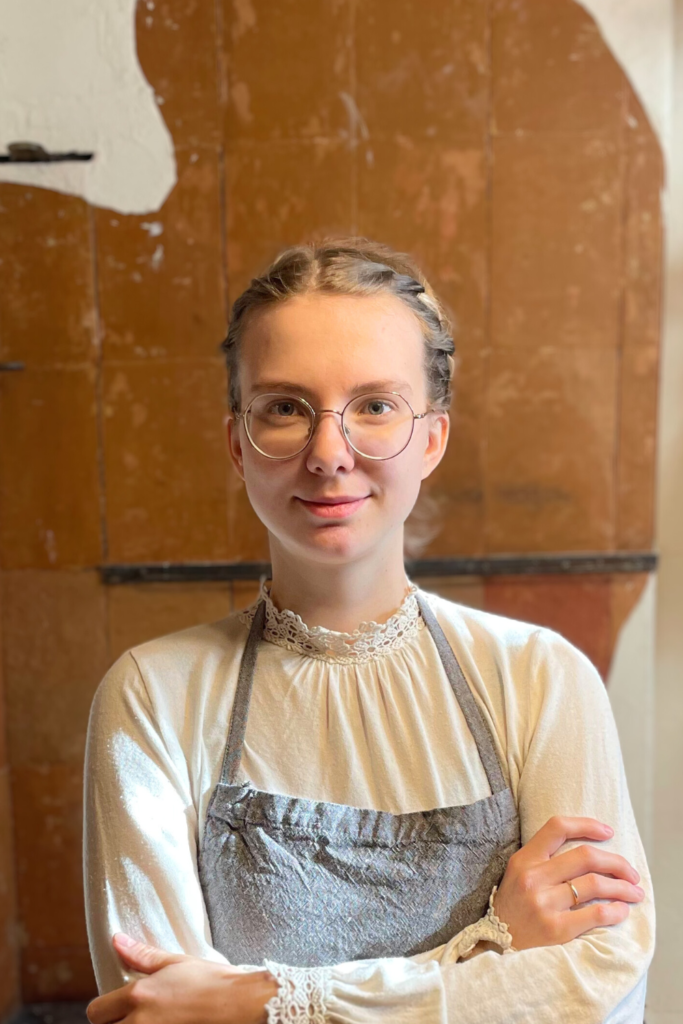I love sewing and creating things with my own hands. It gives everything a personal touch and value. As a cloth diaper mama, I have even sewn our own cloth diapers myself, and they work wonderfully. You can read more about how I use flat diapers here. I have also written a post where I explain different types of cloth diapers to make it easier to enter the world of cloth diapers.

Flat diapers are probably the easiest diapers in the cloth diapering world. And to be honest, after trying different types of cloth diapers, I have to admit that flat diapers are my favorites. They are the most natural, super absorbent, and the most interesting and traditional in terms of use. In this post, I teach you how to sew both flat diapers and tie diapers. Tie diapers are great for securing flat diapers. You can’t use tie diapers as stand-alone diapers because they are not absorbent. But this combination works great for me, and I can’t imagine coming up with or finding anything better.
Before starting, come and follow me on Instagram, Facebook, and Pinterest!
Why Sew Cloth Diapers Yourself?
That’s a really good question! Why do anything yourself when everything is available in stores? Firstly, making things at home is cheaper than buying from stores. So, saving money for the family is an important aspect. But the next and even more important reason, in my opinion, is the joy of making things yourself. It’s so wonderful to plan, design, and use something you’ve created. People need to do some work, and we should do more of the work that interests us and brings us joy.
What You Need for Sewing Cloth Diapers
Fabric – I recommend using natural fibers. I’ve used cotton and linen a lot and can say they’re good. The width of the fabric should be at least 80cm, as that would be the minimum side length of one diaper. Since diapers are square-shaped, the length of the fabric should be calculated based on how many diapers you want to make. It’s convenient to have around 20 diapers for one child. Also, depending on the specific fabric, the fabric could be two to three layers thick. I have used gauze fabric, which is relatively thin, and for flat diapers, I’ve made it three layers thick, and for tie diapers, I’ve made it two layers thick – it works great.
Optional: ribbon – For tie diapers, you can buy sturdy ribbons. Two 90cm pieces of ribbon are needed for one diaper. I sewed the ribbons by cutting strips from the same fabric as the diaper.
Scissors
Thread – matching the fabric
Sewing machine – you don’t need a fancy and powerful machine. Simple flat diapers can be sewn nicely even with a simple, maybe even old, small machine.
Measuring tape
How to Sew Flat Diapers
Double-layered Diaper

- As a first step, cut out a square piece of fabric with dimensions 90cm x 90cm, and the absorbent fabric should be probably double-layered. If desired, you can also cut a long piece and fold it according to your preference, either double or triple-layered. For a double-layered diaper, the fabric size would be 90cm x 180cm, and for a triple-layered diaper, it would be 90cm x 270cm. To cut such a long piece as straight as possible, I recommend pulling out a thread from the inside of the fabric. Then it’s easier to cut along the thread.

- Place the fabric with the right sides together and make a straight stitch on all the edges from all sides, leaving about a 20cm section unsewn for turning the fabric inside out, similar to sewing a pillowcase.
- Turn the fabric inside out, so the seams are on the inside.
- Sew the opening closed through which you turned the fabric. Fold the edges of the opening once (like a single hem) and sew it closed.

- If you want a neater finish, you can topstitch all the edges from the right side of the fabric.
- The flat diaper is now finished!
Single-layered Diaper
Sewing a single-layered diaper is even simpler. I recommend making a single-layered diaper when the fabric used is thick material. For example, muslin or denser linen fabric works very well. I have some diapers made of linen fabric, they are single-layered, and have excellent water absorption – I am very satisfied! Making single-use diapers is done exact same way as homemade cleaning wipes.
- Cut out a square fabric with dimensions of 90 cm x 90 cm.
- Finish the raw edges of the diapers with an overlock machine. If you don’t have an overlock at home, many sewing machines have a stitch similar to an overlock (Brother’s machine has a stitch for this – SS23). If the machine has few additional stitches, a classic zig-zag stitch will also do in a pinch. I have an old sewing machine at home that doesn’t even have a zigzag stitch. If you happen to have such a type of machine, you can find help on this page.
How to Sew Tie Diapers
Tie diapers are amazing because you don’t need any plastic snaps or diaper pins. They are all-natural and super safe for the baby! For tie diapers, you don’t need very thick fabric. I recommend making gauze fabric double-layered, but with linen or other cotton fabric, you can probably make it single-layered.

- For a double-layered diaper, cut out a piece of fabric measuring 20cm x 100cm and fold it in half. For a single-layered diaper, the fabric should be 20cm x 50cm.
- For a double-layered diaper, use a similar technique as for sewing flat diapers: place the right sides together and leave an opening for turning the fabric. But pay attention! We want to attach ties to the diaper, so leave one shorter side of the cloth diaper completely unsewn, and in addition, about 5cm from each longer side. This will allow the ties to be inserted properly. So, metaphorically speaking, the part shaped like the letter “u” remains unsewn. For a single-layered diaper, the explanation is simpler. Hem all three sides, leaving one shorter side unhemmed. I have written a detailed guide on hemming in this post.
- For a double-layered diaper, turn the diaper inside out like a pillowcase and attach the ties to the unsewn ends. Then fold the raw edges of the diaper inward to create a neater appearance. Sew the ties in place. For a single-layered diaper, attach the ties to the unhemmed side and hem the edge along with the ties. This way, the ties will be hidden within the hem. A single-layered tie diaper is ready!



- For a double-layered diaper, sew the remaining edge closed. Do this in the same way as for flat diapers. Fold the edges inward and sew the edges closed from the outside. If desired, you can topstitch all the edges from the outside, just like with flat diapers.
- You have now finished sewing tie diapers!
How to Sew the Ties
As I mentioned, I even sewed the ties for cloth diapers. It’s a pretty simple task, so I finished it quickly.
- Cut out strips of fabric for the ties. The length of one tie strip is 30 cm x 5-6cm, and each diaper requires two ties.
- The quickest way to sew the ties is by folding the fabric with the wrong sides together (folding it in half lengthwise) and then folding the edges in and stitching them together on the outside. This way, you don’t have to deal with the tedious, time-consuming, and almost impossible task of turning them inside out.


- The ties for fastening the cloth diapers are now ready!
Ideas and Tips
- I recommend making diapers with multiple layers of fabric as they will last longer.
- It’s good to have around 20 diapers (tie and flat diapers). That way, it’s very convenient to use, and you won’t run out of diapers.
- I use tie diapers by putting the ties under the baby’s back and then lifting the diaper on top and tying it.
- Even though there are different fabric choices out there, any synthetic material is a poor choice as your baby’s body can’t breathe and natural fabrics are much more breathable.
- You can use flat diapers during nighttime time as well, but I recommend you add some cloth diaper inserts for extra absorbency.
- As you will need diaper covers with flat diapers as well, I recommend you to use wool covers – I use them and they are the best!
- Flat diapers are a great way to use up old bed sheets or daddy’s old t-shirts!


How to Sew Flat Diapers (an Easy Way for Cloth Diapers)
Homemade cloth diapers are the most affordable and convenient way to use diapers. Choose your own fabric, color, and design!
Materials
- Fabric - I recommend using natural fibers. I've used cotton and linen a lot and can say they're good. The width of the fabric should be at least 80cm, as that would be the minimum side length of one diaper. Since diapers are square-shaped, the length of the fabric should be calculated based on how many diapers you want to make. It's convenient to have around 20 diapers for one child. Also, depending on the specific fabric, the fabric could be two to three layers thick. I have used gauze fabric, which is relatively thin, and for flat diapers, I've made it three layers thick, and for tie diapers, I've made it two layers thick - it works great.
- Optional: ribbon - For tie diapers, you can buy sturdy ribbon. Two 30 cm pieces of ribbon are needed for one diaper. I sewed the ribbons myself by cutting strips from the same fabric as the diaper.
- Thread - matching the fabric
Tools
- Scissors
- Sewing machine - you don't need a fancy and powerful machine. Simple flat diapers can be sewn nicely even with a simple, maybe even old and small machine.
- Measuring tape
Instructions
Flat diapers
Double-layered Diaper
- Cut out a square piece of fabric with dimensions 90cm x 90cm, and the fabric should be at least double-layered. If desired, you can also cut a long piece and fold it according to your preference, either double or triple-layered. For a double-layered diaper, the fabric size would be 90cm x 180cm, and for a triple-layered diaper, it would be 90cm x 270cm. To cut such a long piece as straight as possible, I recommend pulling out a thread from the inside of the fabric. Then it's easier to cut along the thread.
- Place the fabric with the right sides together and sew all edges from all sides, leaving about a 20cm section unsewn for turning the fabric inside out, similar to sewing a pillowcase.
- Turn the fabric inside out, so the seams are on the inside.
- Sew the opening closed through which you turned the fabric. Fold the edges of the opening once (like a single hem) and sew it closed.
- If you want a neater finish, you can topstitch all the edges from the right side of the fabric.
- The flat diaper is now finished!
Single-layered diaper
Sewing a single-layered diaper is even simpler. I recommend making a single-layered diaper when the fabric used is thick material. For example, muslin or denser linen fabric works very well. I have some diapers made of linen fabric, they are single-layered, and have excellent water absorption – I am very satisfied! Making single-use diapers is done exact same way as homemade cleaning wipes.
- Cut out a square fabric with dimensions of 90 cm x 90 cm.
- Finish the raw edges of the diapers with an overlock machine. If you don't have an overlock at home, many sewing machines have a stitch similar to an overlock (Brother's machine has a stitch for this - SS23). If the machine has few additional stitches, a classic zig-zag stitch will also do in a pinch. I have an old sewing machine at home that doesn't even have a zigzag stitch. If you happen to have such a type of machine, you can find help on this page.
Tie diapers
Tie diapers are amazing because you don't need any plastic snaps or diaper pins. They are all-natural and super safe for the baby! For tie diapers, you don't need very thick fabric. I recommend making gauze fabric double-layered, but with linen or other cotton fabric, you can probably make it single-layered.
- For a double-layered diaper, cut out a piece of fabric measuring 20cm x 100cm and fold it in half. For a single-layered diaper, the fabric should be 20cm x 50cm.
- For a double-layered diaper, use a similar technique as for sewing flat diapers: place the right sides together and leave an opening for turning the fabric. But pay attention! We want to attach ties to the diaper, so leave one shorter side of the cloth diaper completely unsewn, and in addition, about 5cm from each longer side. This will allow the ties to be inserted properly. So, metaphorically speaking, the part shaped like the letter "u" remains unsewn. For a single-layered diaper, the explanation is simpler. Hem all three sides, leaving one shorter side unhemmed. I have written a detailed guide on hemming in this post.
- For a double-layered diaper, turn the diaper inside out like a pillowcase and attach the ties to the unsewn ends. Then fold the raw edges of the diaper inward to create a neater appearance. Sew the ties in place. For a single-layered diaper, attach the ties to the unhemmed side and hem the edge along with the ties. This way, the ties will be hidden within the hem. A single-layered tie diaper is ready!
- For a double-layered diaper, sew the remaining edge closed. Do this in the same way as for flat diapers. Fold the edges inward and sew the edge closed from the outside. If desired, you can topstitch all the edges from the outside, just like with flat diapers.
- You have now finished sewing tie diapers!
Ties
As I mentioned before, I even sewed the ties for cloth diapers myself. It's a pretty simple task, so I finished it quickly.
- Cut out strips of fabric for the ties. The length of one tie strip is 90cm x 5-6cm, and each diaper requires two ties.
- The quickest way to sew the ties is by folding the fabric with the wrong sides together (folding it in half lengthwise) and then folding the edges in and stitching them together on the outside. This way, you don't have to deal with the tedious, time-consuming, and almost impossible task of turning them inside out.
- The ties for fastening the cloth diapers are now ready!





